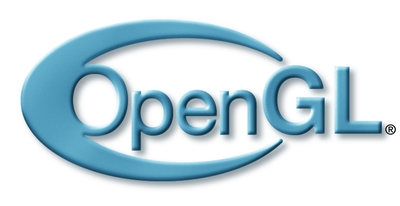
- #Opengl 4.4 drivers#
- #Opengl 4.4 driver#
- #Opengl 4.4 windows#
On a notebook there will be an additional selection available with a choice of graphics cards to use.On the right side of the dialog, use the Browse button to select the application.On the left side of the dialog, under “3D Settings” select “Manage 3D Settings” it should be similar to the following but will allow the user to select the graphics card to run the application on (Integrated or Discrete).This can be found by right clicking on a blank are on the desktop and selecting “NVidia Control Panel” from the pop up menu.

NVidia Card (notebook with Optimus technology).
#Opengl 4.4 driver#
For notebooks with both an integrated video card AND a discrete video card, go to the video driver vendor’s driver setup tool and select the discrete graphics card for the application. For workstations with one video card supporting OpenGL 4.4 or newer this should be all that is necessary. #Opengl 4.4 drivers#
NOTE: It is generally best to keep the video driver up-to-date to keep it compatibly with BIOS, chip set drivers and Operating System updates.
Load the newest video vendor’s driver for the machine’s video card. Setting up a machine to use OpenGL 4.4 or newer: OpenGL 4.4 displays will utilize the video cards GPU if available. The size of the actual texture cache is video driver dependent and may vary from one manufacturer to another. Resolution of large raster files in the 2D map view may be better due to the increased texture cache size in OpenGL 4.4. OpenGL 4.4 supports a larger texture (image) maximum size than OpenGL 1.1 supports. Under the OpenGL 1.1 display only the first 256 characters are supported. Under the OpenGL 4.4 display all characters in a font are supported. OpenGL 1.1 did not support underlines or strikeouts in the special OpenGL Microsoft font functions. The OpenGL 4 display font support will work with underlines and strikeout fonts for labels. Due to display limitations of clean line drawing, OpenGL 1.1 displayed the hidden line sections behind hills. The “hidden lines” are those that should not display in 3D because they go behind the terrain such as the sections of contours behind hills. 3D Contours with “hidden lines” will draw correctly in OpenGL 4.4. Visible differences between OpenGL 1.1 and OpenGL 4.4 or better: For all video cards without Video Vendor support, OpenGL 1.1 will be used exclusively. Optionally, users with cards supporting OpenGL 4.4 or newer may choose to use the older OpenGL 1.1. Video cards with Video Vendor drivers supporting OpenGL versions 4.4 or newer may use the OpenGL 4.4 support. The LP360 for ArcGIS extension now supports OpenGL 1.1 only to remain compatible with ArcMap OpenGL limitations. Both the LP360 standalone and Topolyst products now support two versions of OpenGL, OpenGL 4.4, or better if available, and OpenGL 1.1 are supported for these two products. #Opengl 4.4 windows#
OpenGL 1.0 was released on Windows in 1994. Previous versions of LP360 supported OpenGL 1.0 only. Versions of OpenGL Supported in LP360 and Topolyst 2016:





 0 kommentar(er)
0 kommentar(er)
